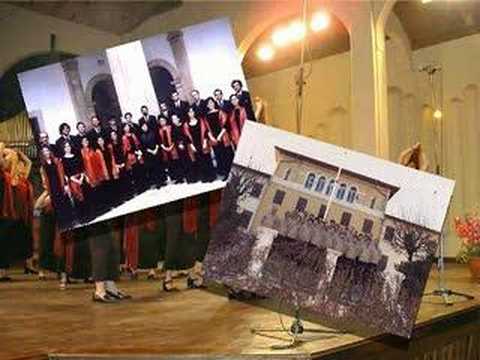11.14.1 First National Choir Festival.

After the triumph of the Revolution, a revival of the arts took place in Cuba. At the beginning of the process, the National Symphony Orchestra was reorganized, music and art education flourished, and a choral movement emerged with professional and popular projections, culminating in the work of the pioneers of this movement, especially in the cities of Havana and Santiago de Cuba.
Amateur choirs made up of children, students, and workers in general were organized throughout the country, and the initiative was taken to create a professional choir in each of the former provinces to partially compensate for the lack of a tradition of instrumental music and bring choral music to the people.
The First National Choir Festival arose from this splendid new choral movement and was organized in 1961. Participating in the Festival were the National Choir, the Santiago Orfeón, and the Camagüey Choir, conducted by Serafín Pro, Electo Silva, and Guillermo Cortina, respectively. Two children’s choirs also participated: one from the Esteban Salas Conservatory in Santiago de Cuba (Santa Lucía No. 304 between San Félix and San Pedro, Santiago de Cuba), and the other from the José Martí National Library (Independence Avenue and 20 de Mayo Street, Plaza de la Revolución, Havana). The Second Baptist Church choir and the Bacardi Rum Company workers’ choir were also invited.
This Festival set the precedent for what would become later Festivals; there were concerts at the Teatro Cuba, collateral activities, lectures on the development of choral singing, and, finally, the most innovative event was the so-called “street patrols,” held on narrow streets that quickly became lively, with the Cuban people enthusiastically welcoming the choirs and exchanging songs with them.
If in December 1961 only seven choirs participated, the following year the number increased; as a new guest appeared the Choir of the “Amadeo Roldán” Conservatory (Calle Rastro No. 11 esq. Espada. Centro Habana, City of Havana), made up of students from our first choral singing school, and from that moment on, the Madrigalista Choir of Santiago de Cuba joined the event, directed successively by Miguel García, Flores Chaviano, Esmérido Betancourt and, since 1978, Santiago Fals.
At this Second Festival, everything that had emerged spontaneously is institutionalized; choirs from across the country clearly and with perspective set their objectives in the introduction to the event’s general program.
Today, the Choir Festivals in Santiago de Cuba are a tradition. As a tradition, the people of Santiago eagerly await each event and flock to all the venues in the province. The Corhabana Festival was founded in 1999; it was then called the Havana Choir Encounter. It is an annual event, while the Santiago de Cuba Choir Festival is held biannually.








